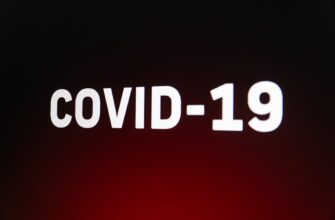## Introduction
In the volatile world of cryptocurrencies, stablecoins like USDT, USDC, and BUSD provide crucial price stability pegged to the US dollar. With over $120 billion combined market cap, these three giants dominate the stablecoin landscape. This comprehensive guide breaks down their differences in security, transparency, usability, and risk factors to help you make informed decisions in DeFi, trading, or payments.
## What Are Stablecoins & Why Do They Matter?
Stablecoins are blockchain-based digital currencies designed to maintain a fixed value, typically 1:1 with the US dollar. They serve as:
* Safe havens during crypto market turbulence
* Bridges between fiat and cryptocurrencies
* Settlement tools for exchanges and DeFi protocols
* Payment solutions with faster transactions than traditional banking
## Tether (USDT): The Market Leader
Launched in 2014, Tether is the oldest and most widely adopted stablecoin with a $83 billion market cap (as of August 2023). Operated by Hong Kong-based Tether Limited, it’s available on 14 blockchains including Ethereum, TRON, and Solana.
**Pros:**
1. Unmatched liquidity across 500+ exchanges
2. Lowest transaction fees in DeFi ecosystems
3. Broad merchant acceptance for payments
**Cons:**
* Historical controversies over reserve audits
* Only 85% reserves in cash/cash equivalents (remainder in riskier assets)
* Limited regulatory clarity compared to rivals
## USD Coin (USDC): The Transparent Standard
Managed by Circle and Coinbase under CENTRE consortium, USDC launched in 2018 with a focus on compliance. Its $26 billion market cap is backed by:
* Monthly attestations by top accounting firms
* ️ 100% cash and short-term U.S. Treasuries
* Regulatory approval in multiple jurisdictions including NYDFS
**Advantages:**
– Gold-standard transparency with real-time reserve tracking
– Seamless integration with traditional finance systems
– Growing dominance in Ethereum-based DeFi protocols
**Limitations:**
1. Lower liquidity on non-Ethereum chains
2. Account freezes possible for regulatory compliance
3. Slightly higher transfer fees than USDT
## Binance USD (BUSD): The Exchange Powerhouse
Created by Binance and Paxos in 2019, BUSD holds a $5.3 billion market cap with NYDFS-regulated reserves. As Binance’s native stablecoin, it offers unique ecosystem benefits:
**Key Features:**
* Zero trading fees for BUSD pairs on Binance
* Daily attestations of dollar-backed reserves
* Integrated staking rewards up to 10% APY
**Drawbacks:**
– Limited utility outside Binance ecosystem
– Vulnerability to exchange-specific regulatory actions
– Lower adoption in decentralized applications than USDC/USDT
## Head-to-Head Comparison: Critical Differences
| Factor | USDT | USDC | BUSD |
|—————–|——————–|——————–|——————–|
| **Primary Issuer** | Tether Limited | Circle/Coinbase | Binance/Paxos |
| **Reserve Audit** | Quarterly (limited)| Monthly (detailed) | Daily (detailed) |
| **Reserve Assets**| 85% cash equivalents | 100% cash/T-bills | 100% cash/T-bills |
| **Regulatory Status** | Minimal oversight | FinCEN-registered | NYDFS-approved |
| **Transaction Speed** | 2-5 minutes | 2-5 minutes | <1 minute (BSC) |
| **DeFi Adoption** | Highest | High | Moderate |
## Which Stablecoin Should You Choose?
Your ideal choice depends on specific needs:
* **For traders:** USDT for deepest liquidity and lowest spreads
* **Risk-averse users:** USDC for maximum transparency
* **Binance users:** BUSD for fee savings and yield opportunities
* **DeFi participants:** USDC/USDT for protocol compatibility
* **Institutional use:** USDC for regulatory compliance
Diversification across multiple stablecoins mitigates platform-specific risks.
## FAQ Section
### What is the safest stablecoin?
USDC currently leads in safety due to its 100% cash/T-bill reserves and rigorous monthly audits. Both USDC and BUSD have superior transparency compared to USDT.
### Can I convert between USDT, USDC and BUSD without fees?
Most exchanges charge 0.1-0.2% conversion fees. Binance offers zero-fee USDC/BUSD swaps, while decentralized exchanges like Uniswap incur network gas fees.
### Are stablecoins FDIC-insured?
No. Unlike bank deposits, stablecoins lack FDIC insurance. USDC and BUSD hold reserves at FDIC-insured banks, but users have no direct insurance coverage.
### Which stablecoin has the best yield opportunities?
BUSD typically offers the highest APY (5-10%) within Binance's ecosystem. For decentralized options, USDC and USDT provide 2-7% APY across lending protocols like Aave and Compound.
### Could stablecoins lose their peg?
Temporary depeggings occur during extreme market stress (e.g., USDC fell to $0.87 during 2023 banking crisis). USDT has depegged 6 times since 2018, while BUSD maintained its peg except during brief regulatory scares.
## Final Verdict
While USDT dominates in liquidity and legacy adoption, USDC sets the standard for transparency and regulatory compliance. BUSD delivers exceptional value for Binance-centric users. For most investors, holding a combination of USDC and USDT balances optimal security with ecosystem flexibility. Always verify reserve reports and monitor regulatory developments when using any stablecoin.








